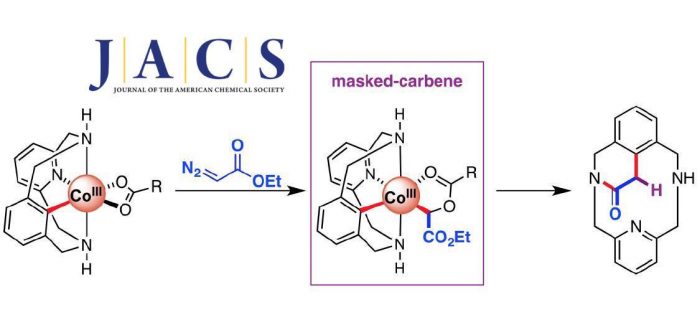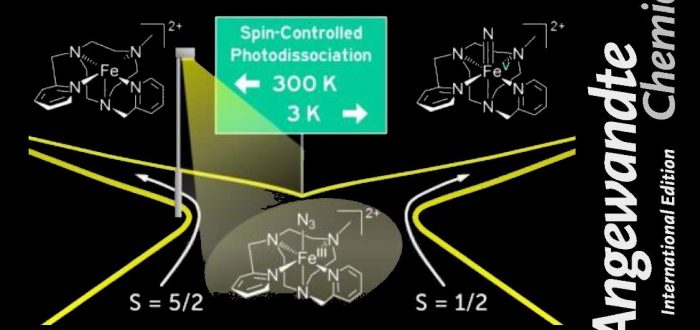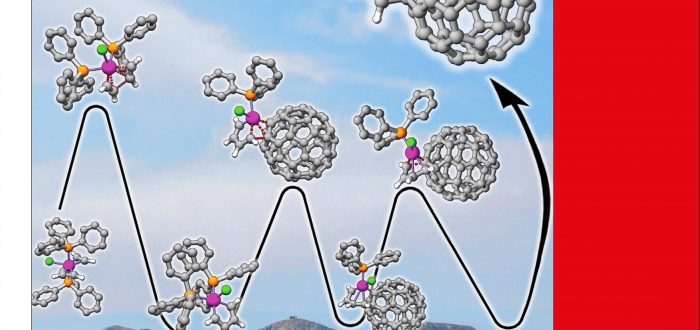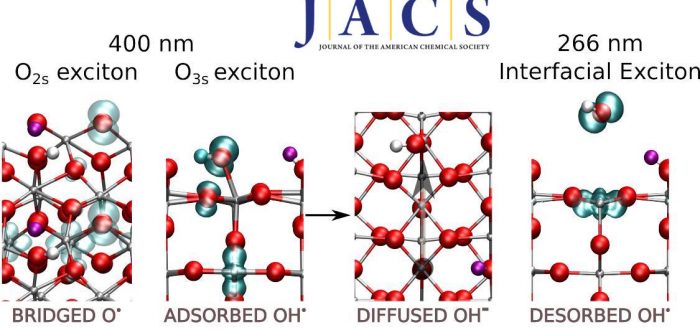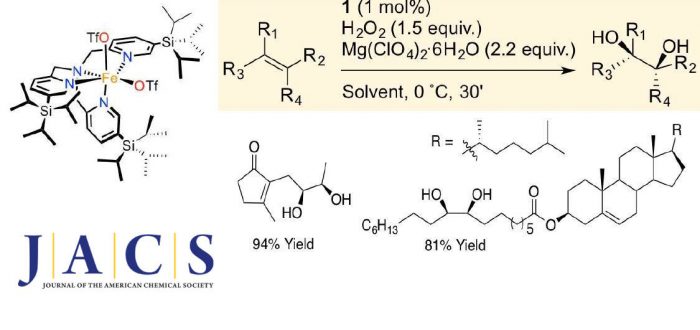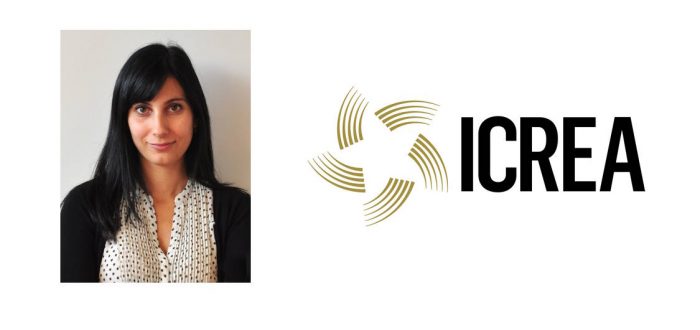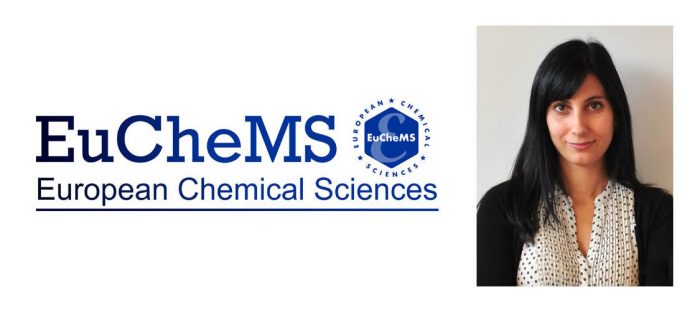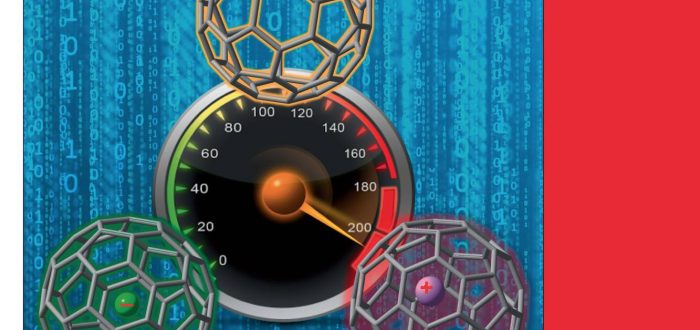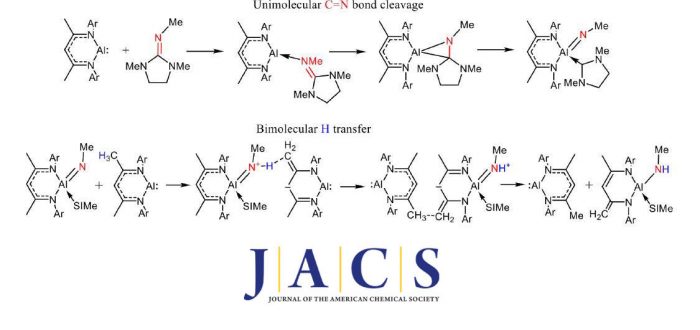Herein we describe the synthesis of a family of aryl-Co(III)-carboxylate complexes and their reactivity with ethyl diazoacetate. Crystallographic, full spectroscopic characterization, and theoretical evidence of unique C-metalated aryl-Co(III) enolate intermediates is provided, unraveling a carboxylate-assisted formation of aryl-Co(III) masked-carbenes. Moreover, additional evidence for an unprecedented Co(III)-mediated intramolecular SN2-type C–C bond formation in which the carboxylate
- sec.iqcc@udg.edu
- +34 972 41 83 57
News
We report the generation of iron(V) nitride complexes, which are targets of biomimetic chemistry. Temperature-dependent ion spectroscopy shows that this reaction is governed by the spin state population of their iron(III) azide precursors and can be tuned by temperature. The complex [(MePy2TACN)Fe(N3)]2+ exists as a mixture of sextet and doublet spin states at 300 K,
Today a paper was published by Agustí Lledó, Anna Roglans and Miquel Solà on “A Computational Study of the Intermolecular [2+2+2] Cycloaddition of Acetylene and C60 Catalyzed by Wilkinson’s Catalyst”. It is accompanied by the Cover picture. A. Artigas, A. Lledó, A. Pla-Quintana, A. Roglans, and M. Solà “A Computational Study of the Intermolecular [2+2+2]
The photocatalytic O–H dissociation of water absorbed on a rutile TiO2(110) surface in ultrahigh vacuum (UHV) is studied with spin-polarized density functional theory and a hybrid exchange-correlation functional (HSE06), treating the excited-state species as excitons with triplet multiplicity. This system is a model for the photocatalytic oxidation of water by TiO2 in an aqueous medium, which
Product release is the rate determining step in the arene syn-dihydroxylation reaction taking place at Rieske oxygenase enzymes, and is regarded as a difficult problem to be resolved in the design of iron catalysts for olefin syn-dihydroxylation with potential utility in organic synthesis. Towards this end, in this work a novel catalyst bearing a sterically
Today Sílvia Osuna received one of the most important mails in her life, in which the Director of ICREA informed her that she had been selected to become ICREA Research Professor. This will provide her with a permanent position, and enables her to dedicate her time fully to research. The IQCC already has two other
Sílvia Osuna was awarded today the inaugural “Young Investigator Award 2017” by the EuCheMS Division of Organic Chemistry. This award aims at recognizing the scientific contribution of the most promising European Organic Chemist under the age of 40, and is generously sponsored by the European Journal of Organic Chemistry. The winner is selected by an
Yago García-Rodeja and Israel Fernández (Univ. Complutense de Madrid), Miquel Solà from the Institute of Computational Chemistry and Catalysis (IQCC) and F. Matthias Bickelhaupt from the Department of Theoretical Chemistry and Amsterdam Center for Multiscale Modeling (ACMM) in the Vrije Universiteit Amsterdam (usual collaborator of the IQCC) have studied the influence of the encapsulation of
Reaction of the cyclic guanidine TolN?SIMe with the aluminum(I) compound NacNacAl (1) results in the unprecedented cleavage of the C–N multiple bond to give, after rearrangement, the carbene-ligated Al(III) amide, NacNac?Al(NHTol)(SIMe) (6). DFT calculations revealed that these reactions proceed via a bimolecular mechanism in which either the basic Al(I) center or the transient Al?NTol species
Iron complex [FeIII(N3)(MePy2tacn)](PF6)2 (1), containing a neutral triazacyclononane-based pentadentate ligand, and a terminally bound azide ligand has been prepared and spectroscopically and structurally characterized. Structural details, magnetic susceptibility data and Mössbauer spectra demonstrate that 1 has a low-spin state (S = 1/2) ferric center. X-Ray diffraction analysis of 1 reveals remarkably short Fe – N

